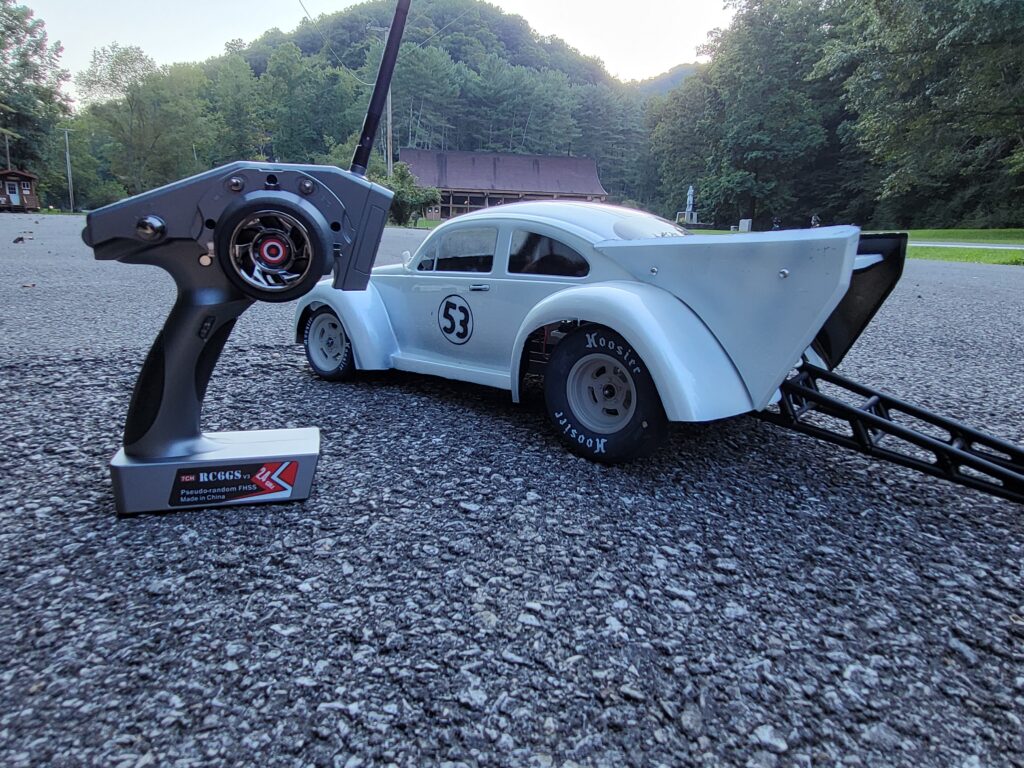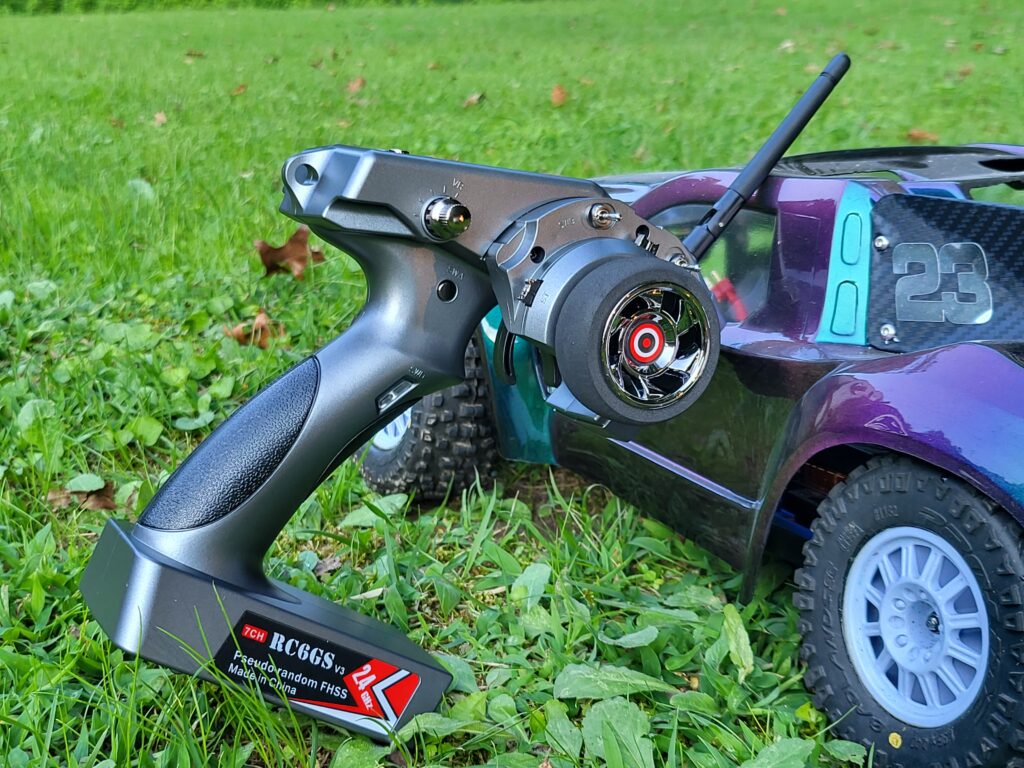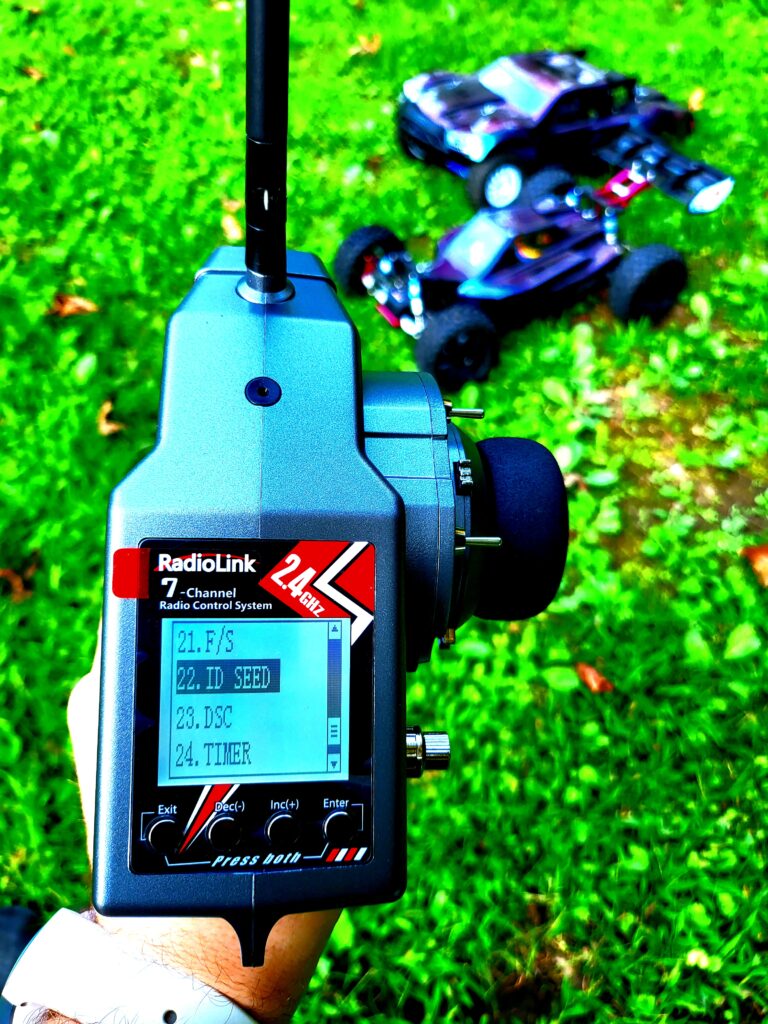
When searching the market for a multi-channel radio many years ago I stumbled across the original Radiolink RC4G, a 4-channel radio that included a gyro-equipped receiver for a very reasonable price. I’ve still got that transmitter and use it on 10 of the cars in my fleet, knowing that every time I take it out it is going to be a reliable workhorse. Fast forward to the next radio purchase, roughly two years later, and I needed more channels with more flexibility in how those channels function. Enter the first RC6GS that I bought, a v2 model, that allowed me to operate another 10 vehicles, some that required four and five channels, and it did so for years with no issue other than being full with no room to add more models. Enter the RC6GSv3, a 7-channel radio that features a familiar menu system, great ergonomics, a solid, quality feel, as well as room for an additional 30 models; just what I needed for my ever expanding fleet!

I’ve used the 6GSv3 in several different types of rigs in the fleet including drag cars, shortcourse trucks, monster trucks, buggies, crawlers; you name it, I’ve controlled it with this system. I predominantly use the R4FGM micro receivers for their small size and ease of fitment in many different models but also have experience with the included R7FG dual antenna long-range receiver, using it in Frank Burns, our SCX10 based MASH tribute. Glitching is a thing of the past with this system; even at the edge of my range of vision I am always in control thanks to the strong, clear signal of the 6GS. Even when mounted in aluminum chassis vehicles and experiencing harsh vibration, such as in our Revo 3.3, the receiver doesn’t complain and exhibits snappy, reliable control, meanwhile taking up less room in a receiver box than an RTR unit. Binding is a simple process with each receiver and happens quickly with no extra tools required. Just power on the car, press the bind button on the receiver and power on the radio (after choosing an open channel in the menu, of course). Switching the gyro on and off is just as simple; press the bind button three times until the LED turns red, indicating the receiver is in gyro mode. For short wheelbase monster trucks like the Traxxas Stampede and Arrma Granite Voltage, both of which are quipped with R4FTM receivers, the gyro function is helpful in reducing over-corrections at high speed and rollovers due to diff-out when accelerating. Speed run and drag cars can benefit from using the gyro function as well, making parking lot bashing a more enjoyable endeavor.
For crawling the 6GS is a great choice thanks to its configurable buttons and comfortable grip that doesn’t strain my large hands into a cramp when driving for extended periods. I use the bottom accessory button on the thumb grip to turn Frank Burns’ front mounted light bar on and off while using the upper thumb aux channel to activate and deactivate cruise control. I have my cruise set at 20% which is a nice steady walking pace, meaning I can take one hand off of the transmitter if need be to balance myself, move trail obstacles or just swat bugs out of my face, all without losing control. To accomplish this set AUX CH3 to the LK-D setting and the CH4 to SW-A. Cruise control is enable by entering the menu, selecting option 10 (IDLUP). selecting the option for TH-LOCK and entering the percentage you want the throttle to stay at. This number may need to be negative if your throttle channel is set to negative so pay close attention to your particular settings. Using this setting automatically set the function to SW-A, making it easy to access and natural to use.
PRO’S:
This radio is comfortable, even with my much larger than average hands. The foam grip provides a quality feeling touch point, the trigger has good tension and all of the switches are in each to access locations. The menu system is easy to navigate and will be familiar to those who have used previous generation Radiolink transmitters but is intuitive and easy to learn for first-time users. The range and signal clarity is excellent while maintaining a snappy feel with a signal latency of only 12ms. The amount of features that are packed into this radio is quite impressive for a unit at this price and the extra channel is a welcome bonus (I consider this a 6-channel radio with a 7th-channel VR knob). For the money I’m not sure this radio can be beat and I would recommend it to anyone looking to consolidate all of their rigs onto one radio or who is looking to upgrade from their RTR system.
CON’S
As of late my transmitter is having sporadic power issues, as if the connector between the board and AA battery tray is coming loose just long enough to shut everything down. This causes the built-in failsafe to activate, which is no real issue, but it is a minor annoyance that will require some disassembly to diagnose and fix. This radio is two years old and has hundreds of hours of use to its credit so I am not surprised that something could have jostled loose but it is a mystery as to what the culprit is. I would like to see Radiolink switch to a Li-ION or LiFePO4 battery and a Type-C charge port instead of the 6 AA batteries that the radio uses now. This would reduce the weight of the transmitter even further and would extend the run time of the radio from days of continuous use to weeks or months without a charge. Finally, and this is a very small nit to pick, I’d like to see a larger LCD screen with more contrast capability included in future models. Only having about 15% of my vision in one eye makes it impossible to see the screen in the sun and even in the shop the screen can be a little tricky to see. This doesn’t apply to everyone but it is a feature I’d like to see.
CONCLUSION
I don’t like the Radiolink RC6GSv3… I love it. It is reliable, has great range, receivers are inexpensive and work simply, the ergonomics were designed with a human hand in mind, there’s a lot to love about this radio. The downsides are minimal but are far outweighed by the benefits gained from this radio system. I commend Radiolink on a job well done and look forward to what’s next in this line of transmitters.



